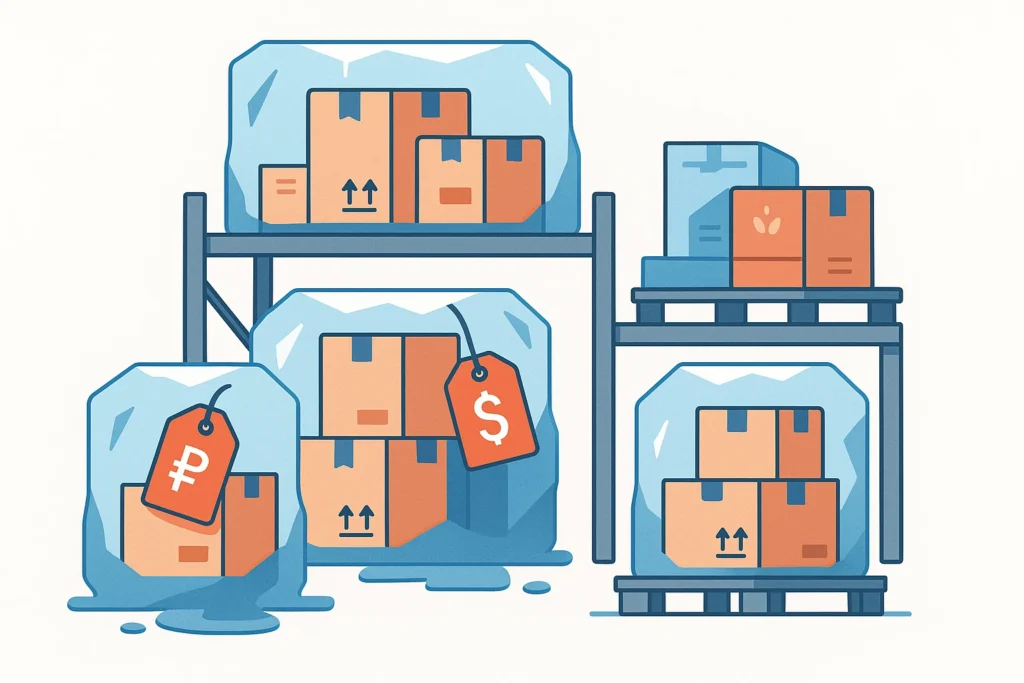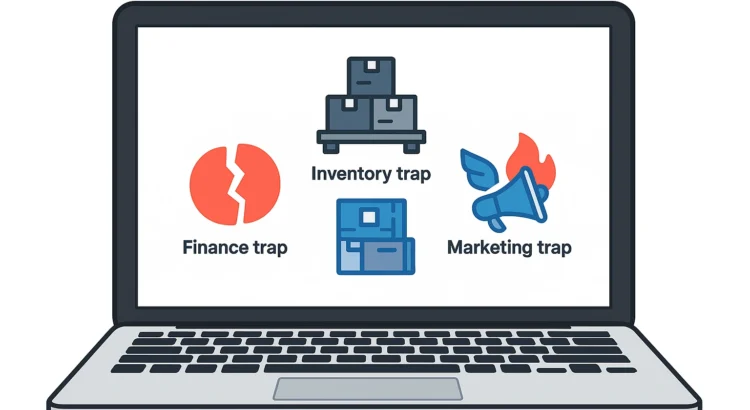This article is about how to avoid three traps that destroy the product business in Ukraine.
In 2024, e-commerce in Ukraine continues to grow: marketplaces are expanding, the number of entrepreneurs is increasing, and entry barriers are minimal. But despite this boom, most beginners close their businesses within the first 12 months. Why does this happen? Because they fall into three typical traps that subtly but systematically destroy the business.
Content
1. Financial Trap: The Illusion of Profit and Cash Gaps
Many entrepreneurs confuse “profit” with “money in the account.” You can sell with a markup and then have no money for salaries or taxes. This is called a cash gap – when payments need to be made, but the funds have not yet been received.
Reasons:
- Lack of financial planning
- Mixing personal and business finances
- Unaccounted expenses: returns, delivery, advertising
- Expenses grow faster than income (rent, logistics, salaries)
What to do:
- Implement three reports: on profits, cash flow, balance
- Create a payment calendar: who, when, and how much needs to be paid – to you and by you
- Calculate the break-even point: how much you need to sell to avoid losses
- Build a financial “cushion” for 3-6 months of expenses
2. Warehouse Trap: Frozen Money in Goods

A business can have a warehouse full of goods, but have no money to pay suppliers. The reason is illiquidity, i.e., goods that do not sell. At the same time, another extreme can occur – a shortage of popular items when the customer wants to buy, but there is no product.
Main Mistakes:
- Buying large batches without demand analysis
- Ignoring inventory accounting
- Hoping that “it will sell someday”
- Working without forecasting
Tools:
- ABC/XYZ analysis: dividing goods by value and demand stability
- Calculating lost profit due to lack of goods
- Fulfillment or dropshipping – as a way to avoid warehouse risks
Practice:
- Sell illiquid goods at a discount, do not keep “dead stock”
- Do not buy goods “just in case”
- Use inventory analytics in CRM or accounting system
3. Marketing Trap: Competitive Invisibility
Even with a good product and finances, you can lose if you are simply not seen. The market is oversaturated. Sellers compete on marketplaces where all products look the same. The customer sees 10 identical products – and chooses the cheapest. This leads to price wars and zero margins.
How to Stand Out:
- Formulate a clear Unique Selling Proposition (USP): why buy from you?
- Be authentic: show who you are, your values, processes
- Work on the brand, not just sales
What Needs to Be Done:
- Conduct an audience analysis: their pains, desires, objections
- Study competitors: who they are, their strengths, weaknesses
- Build a multi-channel strategy: marketplaces + website + social media
- Invest in content, SMM, a loyal audience, not just paid advertising
Conclusion: Not Three Problems, But One Chain
Financial chaos → incorrect purchases → illiquidity → cash gap → no budget for marketing → no sales → even worse cash gap. These are not three separate problems, but one system that drags the business down.
To Get Out of This Circle:
- Stop managing intuitively
- Implement systematic reporting, accounting, analytics
- Build a brand, not just a point of sale
An entrepreneur who manages finances, inventory, and marketing is not a “talent,” but the result of strategy and discipline. And this is what distinguishes those who survive and grow from those who leave the market after the first season.
Three Traps Destroying the Product Business in Ukraine: How to Avoid
Join us on Facebook 😉
